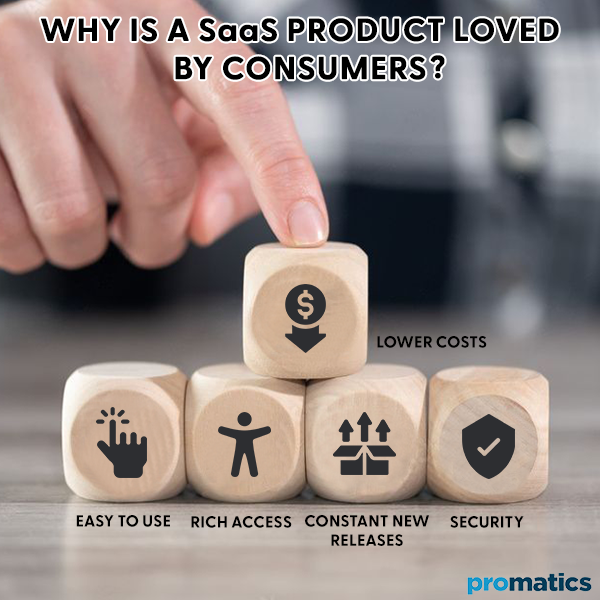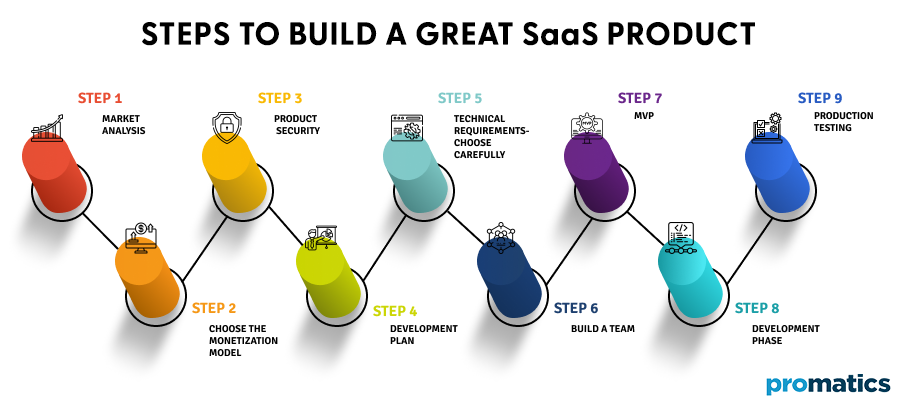SaaS Treasure Hunt Guide: How to Build a Great SaaS Product?
Whether you have been operating your business in stealth mode or not, there’s no doubt that SaaS is on the rise, and it could be a great resource for your company.
But before you rush into building a product and launching it into the market, you need to do some due diligence and ensure you have everything figured out.
Yes, creating a great SaaS product can be difficult, but with the right approach, it’s definitely possible. This brief article will shape the steps you need to take to create a successful SaaS product. We have created a treasure hunt guide to make you jump right in.
In it, you will find tips, tricks, benefits, and advice on everything from market research to building strategies. Whether you are new to SaaS or an experienced developer, our guide will help you build the best product possible. So, start your treasure hunt right now!
What is a SaaS Product?
Software as a Service, or SaaS, is a model of how software or application is delivered to a respective customer over the internet. You can also call SaaS services web-based services or hosted software. Simply put, SaaS is a ready-made software product delivered to a customer on a subscription basis.
As a customer, you don’t have to install or maintain any massive software. Instead, you can access it via any internet browser and eliminate the need for complex software management. The provider would be responsible for managing the application access, including its availability, security, and performance.
In addition, since cloud computing is spreading like wildfire, SaaS is taking control of 75% of the cloud workloads as predicted. So, if you plan to develop a SaaS product or have a solid idea to try in this massive market, it is the best time to try your luck. Modern SaaS technology is a vast network that provides you with a wide array of opportunities, including building a platform and connecting multiple apps, integrating IoT solutions, and analyzing big computing data.
If you are still confused about Modern SaaS technology and its products, here is a glimpse of some of its famous products that are doing great in the digital market. Some of these products might be the go-to product that you can’t imagine living a life without using them.
i.) Amazon
ii.) Shopify
iii.) Google
iv.) Salesforce
v.) Slack
vi.) Zoom
vii.) Netflix
viii.) Dropbox
Different Types of SaaS Products
With the proliferation of cloud-based software, more and more businesses are looking to adopt SaaS products to save time and money while expanding the business.
Here is a brief discussion about different SaaS products and their offerings.
a.) Customer Relationship Management Software (CRM)
Customer data is valuable for any business as it helps generate marketing tactics or profit. CRM, a product of SaaS, is a tool that uses to effectively manage customer data, proving helpful in enhancing the relationship between customer and business.
CRM tool also helps businesses forecast sales, automate marketing or sales, and provide reports on business models.
Some of the famous and most-used examples of CRM is Salesforce.
b.) eCommerce Apps
eCommerce is a rapidly growing industry as businesses adopt digitization because their customers are always online, enabling the need to invest in the right software that reduces expenses or maximizes profits.
Also, eCommerce SaaS solutions are a perfect gateway for small or new businesses, as they are easy to use and manage and allow businesses to start immediately.
For example, Shopify is a huge name under the eCommerce umbrella, where firms or entrepreneurs sell their products or services online. From customizing shop themes to simplifying payment processing, it is an ideal online shop you can have.
c.) Communication Resources/Platforms
Another widely used and famous product of SaaS is communication platforms. Instant messaging and file-sharing services make it an attractive choice for people worldwide and save the time and cost of sharing knowledge, confidential, and business resources.
Businesses use communication apps to secure one-on-one conversations with employees or customers. Slack is the most popular tool businesses of any size use.
d.) HRM Solutions
SaaS products also help businesses manage human resources, a department responsible for recruiting, interviewing, employee record managing, performance tracking, and more.
SaaS product comes in handy for small to large businesses constantly evolving, hiring new talent, and ensuring the adequate performance of each employee. The software helps store all the relevant employee data in one place, eliminating the risk of mismanagement. Also, it helps managers create review reports on merit.
Among many examples of SaaS products for human resource management, BambooHR and Lattice stand out.
e.) Project Management Software
Project management software is a key part of any organization’s success. Whether you are a startup or an established company, having the right tools can help you stay on track and meet your milestones.
SaaS products such as project management software are a great option because they provide both the functionality and the flexibility you need to manage your projects smoothly. Since synchronization happens in real-time, this software or applications are easy to use than the shared spreadsheets.
You can find many outstanding cloud-based project management software like Trello or confluence by Atlassian and enjoy the real-time collaboration features, current project status, blog posting, task tracking, deadline tracking, etc.
f.) Billing Software
Businesses use billing software to keep track of their expenses and allocate resources appropriately. SaaS solutions for billing make the life of companies easy by handling hundreds of online transactions daily, taking care of subscription billing, storing and securing customer data, and payment reporting to reduce the risk of suspicious activities involving funds.
The most common and ever-growing payment gateway and SaaS products are Paypal for making or receiving safe and secure payments and Tipalti for businesses to handle and manage daily billing requirements.
Here are 10 amazing SaaS products ideas to get you started.
Benefits of SaaS Products to Consumers
Businesses that use SaaS products have many benefits over those that don’t. Some of the most important benefits for consumers include:
1.) Lower Costs
The main benefit of using a SaaS product is that it is often cheaper than traditional software solutions. This is because the software is delivered over the internet, and there are no upfront costs.
Also, the maintenance cost is near to none because the SaaS providers own the environment and take care of the costs splitting among all the customers, making it cost-effective for the end user.
2.) Easy to use
Another benefit customers perceive from Modern SaaS technology products is how user-friendly they are. It is usually because they are designed to access different devices, hence offering a variety of user interfaces.
Also, you can test the SaaS product/application before getting a subscription, so you can analyze all the features and its interface before getting the product.
3.) Rich Access
Unlike traditional ones, SaaS applications are always ready to run and accessible whenever you need them. Since running on a cloud environment, it won’t limit you to any specific device and will allow you to access it from multiple devices simultaneously.
Hence, SaaS technology also boosts productivity, so modern businesses welcome this model with open arms. Also, SaaS products are perfect for people who are new to technology or want an easy way to get started. It makes them ideal for use by consumers who have varying levels of experience and expertise.
4.) Constant New Releases
SaaS products always have new releases available, keeping users up to date on the latest changes and updates without worrying about installing new software.
Also, it is helpful for people who want to keep their systems running smoothly and avoid any disruptions or problems. Many Saas products offer robust analytics capabilities, which allow businesses to track performance and make informed decisions about future investments.
5.) Security
SaaS service providers don’t compromise on security because several tenants share similar platforms, and user data protection has to be a top priority.
Steps to Build a Great SaaS Product
Considering the growing trend of SaaS products and realizing their benefits, if you are wondering how to build a great SaaS product from scratch, keep reading.
i.) Market Analysis
After having a great idea for a product, you need to analyze your target market and recent trends in your respective niche in-depth.
Since SaaS development relies on modern technology, like Machine learning and AI, you should have in-depth knowledge about these technologies and their trends to master the discovery phase.
Don’t forget to have a keen eye on your competitor’s move. Explore existing apps and software that lies in your segment, figure out your competitive advantage and weak points, and know how you can differentiate your brand from others in the market.
ii.) Choose the Monetization Model
After all the studies about the product, competitors, and market, it’s time to move on and decide on your monetization model. Though it depends on the infrastructure and features of your application, you should still clearly map out the essentials and forecast the revenues. Many studies show SaaS business model is the best way to sell software.
Here are a few application monetization models that work best for SaaS app products.
Freemium Model: In this model, users can access the product without paying anything upfront, but they can always upgrade to the premium or paid subscription. It lets users access all or a few features you provide to get enough idea about the app and its offerings. This is a popular model because it allows users to try the product before deciding whether or not they want to invest in it.
Subscription Model: Users pay a fixed amount of monthly or annual fee to avail of the services you provide through the app. It can be helpful for businesses that want to generate a lot of recurring revenue from their potential users or clients.
Transaction Fees: It is another growing model in the digital marketplace where when the user makes money on your app, they are bound to pay you commission fees. Many freelancing marketplaces use this model, and that’s how they generate revenue.
iii.) Product Security
Building a SaaS product brings many opportunities to grow your business, but you can’t avoid the opportunities for security vulnerabilities. Besides choosing a reliable vendor, here are some suggestions you can take to ensure your product is secure as possible for you and your clients.
Establish security policy
your policy should include information security, employee information security, data privacy, and disaster recovery provisions. You should also develop a security plan to identify risks and implement measures to mitigate them.
Securing User Data
Keep user data secure by including login credentials, account numbers, and other sensitive information. Securely stored on the company servers in encrypted form on company-pwned devices.
4.) Development Plan
We are moving toward the App or software development phase after thoroughly examining the market, competitors’ big moves, and technological trends. Here are some points to cover under this huge umbrella.
a.) Who is your target market, and how to reach them?
b.)What is the competitive advantage that sets you aside from the competitors?
c.) Determine the pain points of your potential customers and design strategies to solve or at least reduce them with your product.
d.) What will be your money-making model? How will you generate enough revenue to continue performing in the fast-paced digital world?
e.) How will you invest your profits? What will be the funding sources? How to reduce expenses, etc.
f.) Set your vision, mission, and objectives. Make short- and long-term goals to achieve the vision, so you have a clear road map to follow.
5.) Technical Requirements- Choose Carefully
When developing software, a range of programming languages, frameworks, and tools are used in the whole development phase. In old times, there were a few technological stack options available. But now the market has evolved big time; determining the right solution stack is not as easy as it sounds.
However, it depends on your business niche and its demand. Here are some popular choices you will have.
- Front-end Development: It involves everything the end-user sees on their device screen. JavaScript would meet SaaS requirements.
- Back-end: The server side is not visible at the front end, responsible for building the core functionality of your product while ensuring its responsiveness. Developers usually use Python, Ruby, or PHP languages to do the job.
- Database: It keeps the necessary information about your product, and we recommend considering PostgreSQL, NoSQL, and MySQL.
6.) Build a Team
A good team under strong leadership can be a game-changer for your SaaS product development and its success. To make your dream a reality, you need a dedicated team to help you achieve your goals. Your team should include:
- Software developers
- Designers
- QA engineers
- Business developer or analyst
- Project manager
You can build an office and get your team in-house to have one-on-one conversations, plan, and monitor their performance if you have a budget. However, in the era of remote work, you will find freelancers to do the job.
7.) MVP
Before launching the final product, it is better to introduce the trial version of your SaaS solution with basic features and receive honest feedback for improvement. It will give a taste of your product to your target market and give you enough room to enhance it before the final product goes out.
8.) Development Phase
I know you have been waiting for this phase.
After receiving the feedback and a thorough analysis of how your product can possibly perform in the respective market, you are all set to put the product in the development phase.
Communicate with your team about your vision and give a marketing team heads-up for some early suspicious marketing tactics.
9.) Production Testing
After the App/software development, it is better to test it by yourself, or the QA engineer will finally approve it to launch it. The beta-testing is essential as it will give you an idea about its maintenance requirements, next upgrades, and much more.
Conclusion
When building a great SaaS product, there are a few key things to remember. First, ensure that the product is user-friendly, and users feel like they can jump right in and start using it right away.
Make sure that the built-in features are well-planned and organized, so users know what they are getting when they sign-up for the service. Finally, consider how to make the product worth your user’s money by having a competitive edge that keeps you distinct from others in the market. The more value your product provides, the more people will be willing to pay.
Still have your concerns?
Your concerns are legit, and we know how to deal with them. Hook us up for a discussion, no strings attached, and we will show how we can add value to your operations!


